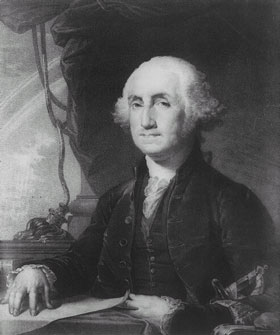Affillion is a major private affiliate network. They feature an industry-leading content locking platform, high quality email submits, and offers that are hotter than the sweaty city they are based out of – Miami, Florida. If you’ve ever visited their super slick website, then you know these cats don’t mess around. You think you’ve got what it takes to be #1? You don’t have a clue until you’ve spoken with CEO of Affillion, Jared Esguerra.
Check out my interview with Jared to find out what offers are hot right now, and he’ll tell you straight up which elements of a campaign will make you money. Oh, and if you’re wondering exactly how Affillion lives up to their slogan, “Money never sleeps and neither do we,” Jared will let you in on this not-so-dirty little secret.
But, as far as I’m concerned sleeping is for second place finishers or what most people like to call losers, so watch out CPA networks because while your sleeping, Affillion is climbing their way to the tippity top.
Tell us a little bit about yourself. Where are you from? How did you first get involved in affiliate marketing? I was born and raised in Miami, Florida and I am half Colombian and half American. I love living and working in Miami as it’s the most diverse and ethnically mixed cities in the US and there is never a dull moment. It also provides us a great opportunity to fly affiliates down and show them a great time since there is so much to do in this city. I have been involved in affiliate marketing for over 5 years now and like most people I got involved in the industry by speaking to a friend who was making a ton of easy money at the time. Once I learned what he was doing and how he was doing it, the rest was history. In my spare time I enjoy going to the gym, practicing mixed martial arts, partying and watching movies!
Why should someone choose Affillion as their CPA network? What makes you better than the rest? At the end of the day the majority of CPA networks all have similar offers and payouts; what really sets us apart is the relationships we develop with our affiliates. If you want to be part of a CPA network that treats their publishers like family, and takes the time to really get to know you and your needs then Affillion is where you need to be. We personally test the majority of our offers in house and use that knowledge to then take publishers campaigns to the next level.
Reputation is the most important element in the CPA world, and we live and die by ours. We have never missed a payment and strive to pay our affiliates on a weekly basis given the offers they are pushing.
Another main difference is that we are very picky on who we allow to be accepted into our network and as a result of being a smaller “boutique” CPA network, we can dedicate a huge amount of resources and time to each individual publisher and as mentioned before really build a great mutually beneficial relationship.
Affillion also now has a community and social element to it were affiliates can communicate with each other and affiliate managers via live chat and forums every day to really develop that family feel and help each other out. We also host weekly webinars on various media outlets such as PPV, POF, and Media Buying etc.
There are a lot of mentions about your content locking platform. How does this benefit affiliates? We launched our content locker in beta a short while back and affiliates went crazy over it, the amount of features we added and functionality blew away the competition. We switched tracking platforms and as a result had to rework our content locking platform but it will be back stronger then ever very soon. Once its live again affiliates will be able to monetize their original website content and make money from it regardless of which country they are in.
What traffic sources prove to be most effective for your affiliates? Social media and facebook are the most effective for our affiliates at the moment. Emailing and mobile traffic come in second. Mobile traffic is exploding and affiliates need to take advantage of it before it becomes to saturated.
At the end of 2010 both Google and Bing confirmed that Twitter and Facebook signals influence search rankings. Do you think Social Media is the new SEO? I do believe that social media is impacting SEO. However I will be the first to say that SEO has never been my forte but I do believe that back linking will always have a huge impact on SERPS and social media might be a smaller part of the algorithm.
With the recent crackdown by the Federal Trade Commission (“FTC”) on Internet-based false and deceptive advertising, do you think enough has been done to weed out the bad guys from the good guys? How does Affillion prevent and deal with fraud? I think the impact the FTC is having is just affecting the actual marketing strategies of the big time affiliates who were making a killing back in the Acai crazes. I do not think its actually having any effect on the amount of fraud in the industry.
Every affiliate who applies to Affillion must undergo an extensive phone interview and supply a home or cell phone number, no skypes or google voices. We generally are not accepting publishers from high fraud areas, with a few exceptions here and there. Once an affiliate finishes the phone interview, we then analyze their application based on a few fraud metrics that our tracking platform provides. If approved since they are new, there traffic is monitored extensively through more fraud tools that we have. Between all those steps, we have greatly reduced the amount of fraudulent affiliates that sign up with us.
What are the most important elements of running a profitable campaign? The most important elements are making sure you are catering to the right demographics, you can lose so much money by having the wrong targeting so make sure you do a lot of research as to who your ad should be catered to. You can get very creative here and do niche targeting as well, the more niche you go the cheaper your bid prices will go and higher CTR and conversion rates. Another extremely important element is testing, split test every thing from titles, ad copies, landing pages and pictures.
Online ad spending is said to hit $50 billion through 2015. Can you give us some insight on your business strategy for the upcoming years? We plan to just keep growing Affillion as fast and as large as we can. We will be expanding our incentive and content locking side of the business as that sector is growing in popularity as well. We will also be working to bring in more exclusive offers that will be unique to Affillion. We have some amazing plans in the works for some future projects however I cant discuss them publicly yet at the moment.
Which offers are performing well on your network? Email submits are doing great and is definitely what is hottest. Daily deal type offers are doing awesome.
What advice would you give someone first starting out in affiliate marketing? Where are the best places for newbies to learn about the industry? I always repeat my self when this question is asked because I cannot stress it enough. Spend more time DOING and not so much time READING. Obviously some basic knowledge and preparation is good but what new affiliates need to understand is that they will learn infinitely more by actually just getting their hands dirty and running some campaigns even if its at a loss. There are countless places and methods to get free advertising vouchers for Adwords, Facebook and others, so sign up for those and use them to test. Chances are you will lose the money however what you gain from the experience is priceless.
If I had to choose one source, I would def say Mrgreen’s blog. He has some great posts and on top of that he actually posts case studies and tips you can apply to your campaigns. So if you want to do a small bit of research before you start take a look at the case studies and put your own twist on them. Remember copying campaigns will only get you so far, the publishers that really bring in the big bucks are the ones that are on the cutting edge of the trends and constantly thinking out of the box, so be creative.
So you’re website says, ‘Money never sleeps and neither do we.’ That’s clear with the success you’ve had in the past year. What’s your trick? Coffee? Red Bull? Are your employees chained to their chairs? I guess we need to keep the chains tighter to the chair if word got out about that already LOL. On a serious note, I could not ask for a better team, everyone is 100% dedicated to taking Affillion to the next level and helping affiliates scale. My business partner Kenneth Metral is the best out their at bringing in new advertisers, going offer hunting when affiliates need offers, and over all affiliate management. Our approvals team is top notch and is the main reason why we have eliminated so much fraud recently. We also have one of the best Affiliate managers in the industry, Brottany Dawkins. To this day I have not met anyone that works as hard as he does to make sure publishers have everything they need to be successful. He is literally on 24/7 helping affiliates.
We want to make Affillion the #1 private network in the industry and we will not sleep until it becomes a reality.
When you’re not busy kicking ass in the affiliate marketing industry, how do you spend your time? Give us a glimpse into what your typical day looks like. A typical day mon-fri basically starts in the AM waking up, responding to emails, checking stats, chatting with affiliates and basically doing everything that goes into running a network! To fast forward through all that boring stuff I am huge into fitness and mixed martial arts so around 4 pm I will head to my local crossfit gym for my first work out of the day, then around 8 pm head to my mixed martial’s arts gym for another hour or 2 of jiu jitsu and boxing. In between those sessions is just more work and after as well. So its Affillion and Gym for me Mon- Fri! Weekends are spent enjoying Miami’s restaurant scene and nightlife.
What’s on your ipod’s playlist right now? Well you caught me at a bad time because normally I am a House head and enjoy Axwell, Kaskade and Steve angello However right now my gym playlist is on my ipod with music that would probably make you think im crazy like System of a down, breaking Benjamin, three days grace, Deftones and my favorite, the soundtrack from the new TRON movie!



























